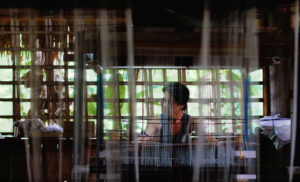THE UNITED Nations Educational, Scientific and Cultural Organization (UNESCO) has inscribed Aklan Piña Handloom Weaving in its list of Intangible Cultural Heritage of Humanity.
UNESCO’s committee for safeguarding intangible cultural heritage meets annually to decide on cultural practices and expressions to recognize. At a session in Kasane, Botswana, this month, the committee added 45 elements to the list, including Aklan piña handloom weaving, Italian opera, the bolero of Mexico and Cuba, Switzerland’s alpine pasture season, the Jamu wellness culture of Indonesia, and loincloth weaving in Côte d’Ivoire, among many others (see Browse the Lists of Intangible Cultural Heritage and the Register of good safeguarding practices — intangible heritage — Culture Sector – UNESCO for full list, https://tinyurl.com/ysy5z373)
Piña, a textile woven using a handloom, is harvested from the leaves of the pinya Bisaya, a specific pineapple species, its fibers extracted by hand. UNESCO notes that “the knowledge and skills of piña handloom weaving are primarily passed on within families.”
“Children grow up observing older family members engaged in pinya Bisaya cultivation and piña weaving, and eventually learn the craft under their guidance. The practice is also transmitted through the Schools of Living Traditions, initiated by local communities in partnership with the government to help safeguard intangible cultural heritage in the Philippines,” it said.
The National Commission for Culture and the Arts (NCCA) received UNESCO’s draft decision last November, which stated that it found the nomination of Aklan Piña Handloom Weaving “satisfactory to the criteria for inscription on the Representative List of Intangible Cultural Heritage of Humanity.”
It was inscribed on the list on Dec. 5 at 8 p.m., Botswana Time.
“This is the Philippines’ fourth element to be inscribed in the Representative List of Intangible Cultural Heritage of Humanity,” said the NCCA in a statement. “It is the first to be inscribed under the domain of traditional craftsmanship, and the first from Visayas.”
The first three are the Hudhud chants of the Ifugao, the Darangen epic of the Maranao people of Lake Lanao, and the Punnuk tugging ritual held at the Hapao River in the province of lfugao.
Adelaida Lim, board member of HABI Philippine Textile Council, said in a Viber message to BusinessWorld: “We have waited for this recognition for the longest time. Piña deserves to be recognized for it is truly a beautiful textile that embodies our traditions. This inscription of Aklan piña handloom weaving to the UNESCO Intangible Heritage List shines a light as well on the many and varied natural fiber textiles of the country. There are great imagined possibilities for other weaves and I hope these also materialize soon.” — Brontë H. Lacsamana
